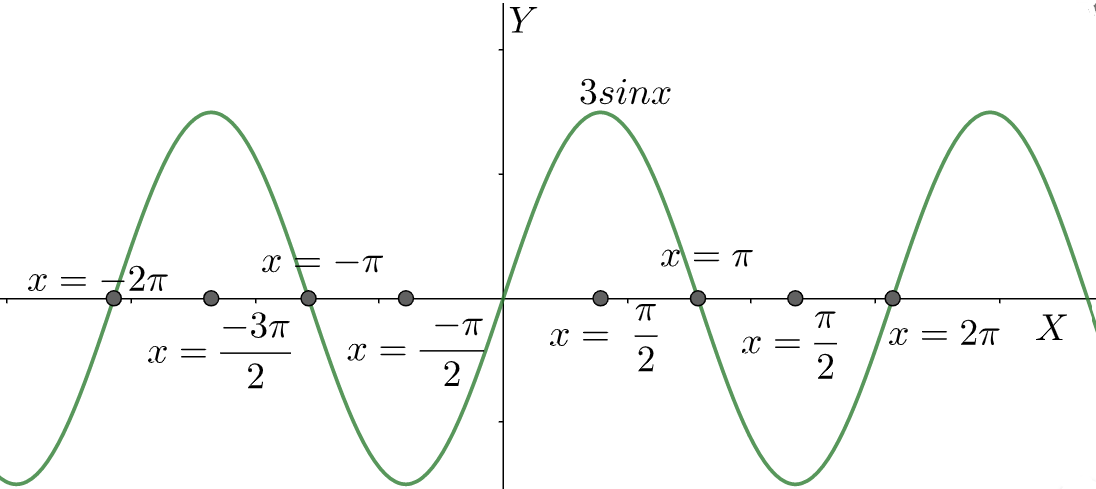Question
Question: How do you find the amplitude, period, and phase shift of \[y=3\sin x\] ?...
How do you find the amplitude, period, and phase shift of y=3sinx ?
Solution
These types of trigonometric problems are pretty easy to solve and they are very straight forward. To find the amplitude, period and other things we first need to define the general equation of sinx , which is defined as, y=Asin(bx+c)+d . From this general equation we can find out all our required outputs accordingly.
Complete step by step answer: Now we start off our given solution, by writing the general form of the equation, y=Asin(bx+c)+d , and from this, each and every variable represents some of the output values, which affect the nature of the graph of y=3sinx. In the defined equation,
A, represents, the amplitude,
From y=Asin(bx+c)+d we can find the period of the function by using the formula of period of sinx that period=b∣2π∣
c , represents the horizontal phase shift or phase shift and,
d , represents the vertical phase shift.

Now, writing our given equation of the form of the general defined one we get,
y=3sin(1.x+0)+0,
From this equation, we can write, that the Amplitude of the function is defined as,
A=3
We can also conclude that the value of the period of the function is defined as,
